The Texas Water Challenge
Conversations with Texas farmers often lead to talk about “the next generation.” This is most likely due to the tradition of Texas family farms. After all, a whopping 98.6% of Texas farms and ranches are family operations.
These families are working the same land as their family members before them. It’s a generational legacy that prioritizes leaving the land and natural resources in better working condition for the next era to carry it on.
That farmer grit and determination for improvement is well-suited for the future needs of all Texans because of a big problem: Texas is running out of water.
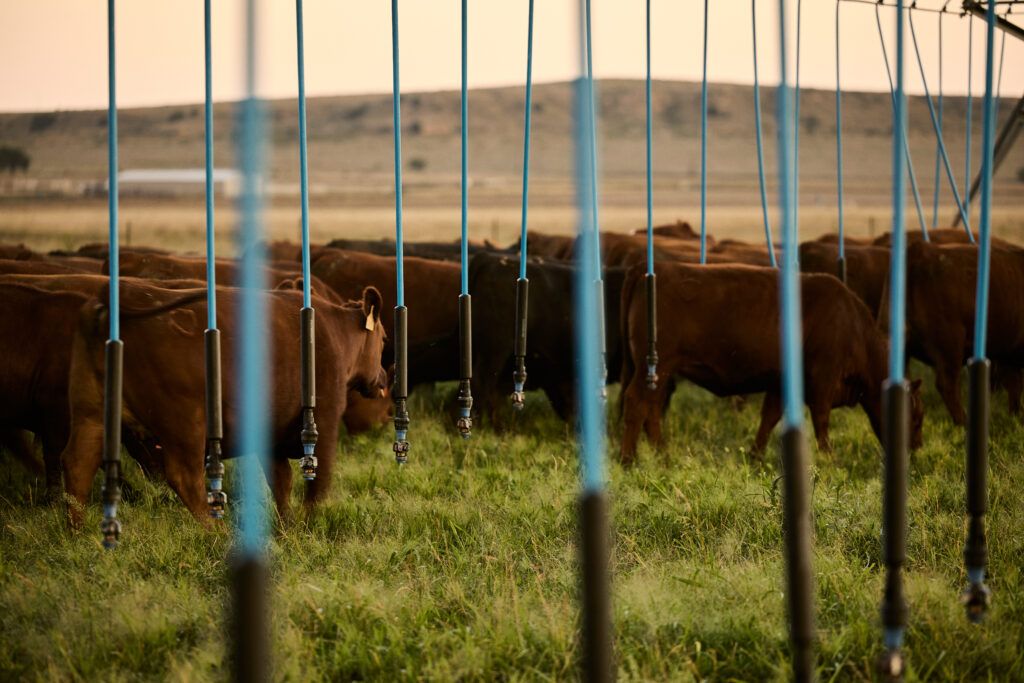
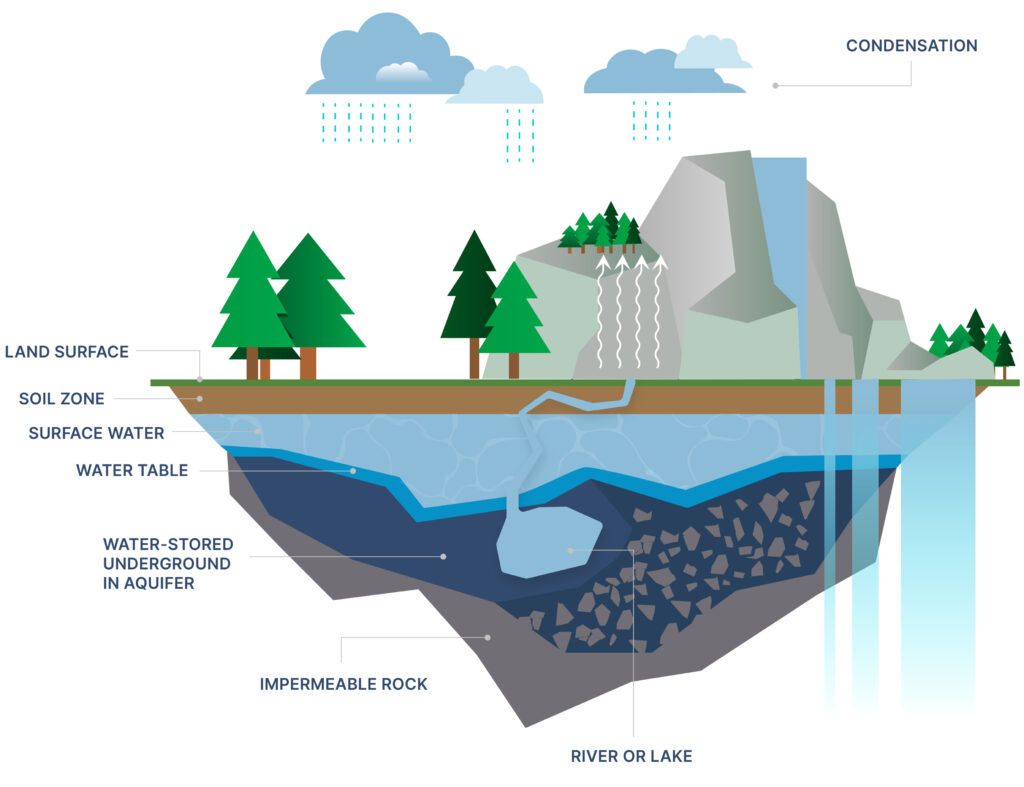
Texas Water Sources: Groundwater Aquifers
Two main water sources provide Texans with water – groundwater and surface water.
Groundwater is water found beneath the earth’s surface. This water gets stored within layers of sand and rock that are called aquifers.
The groundwater supplies in Texas aquifers expand, or get replenished, following snowfall or rainfall events. Likewise, groundwater supplies in our aquifers decrease when it is extracted using manmade wells, or through natural springs. Water shortages, including our current water shortage in Texas, happen when more groundwater gets extracted from aquifers compared to the water that replenishes the aquifer.
Groundwater Use in Texas in 2022
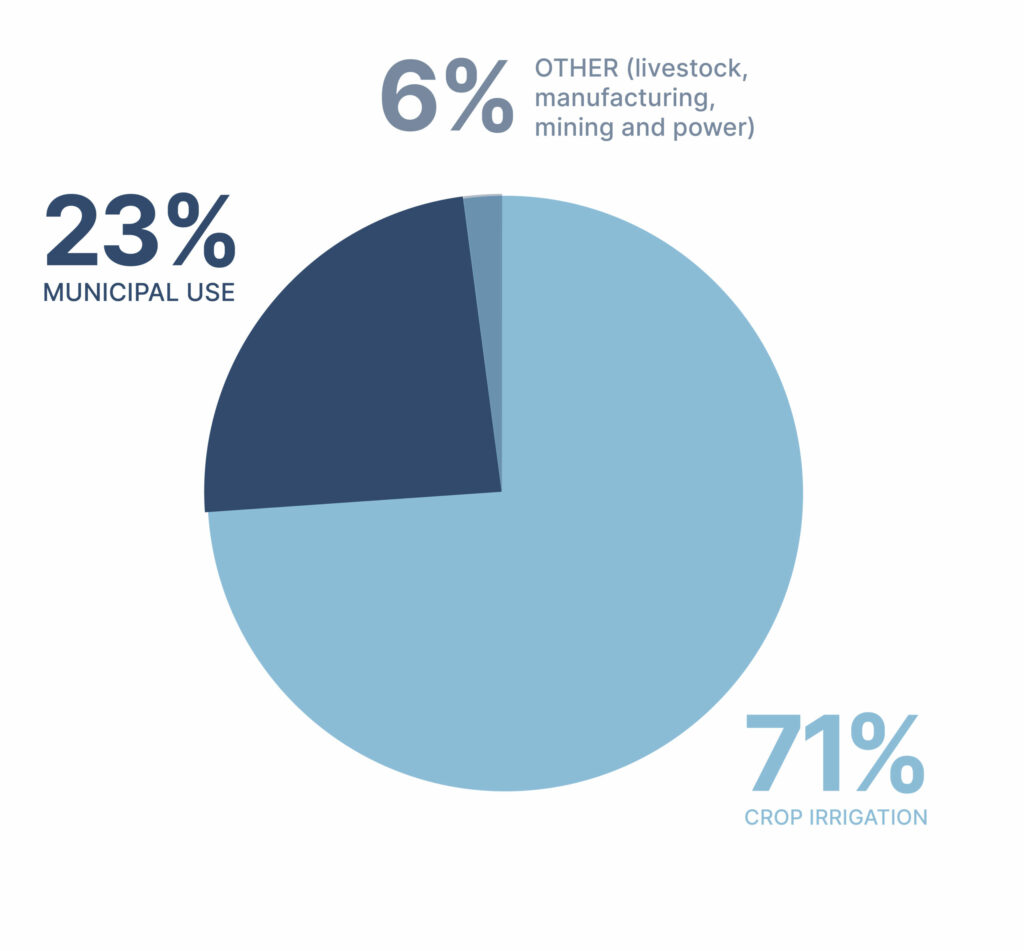
Groundwater in Texas: Where Is It Going?
Texas has 9 major aquifers and 22 minor aquifers that are critical sources of water for all Texans. A survey conducted by the Texas Water Development Board (TWDB) estimates that these aquifers supplied Texans with 54 percent of the 15.3 million acre-feet of water used in 2022.
This groundwater provides farmers with the water to irrigate their crops and for municipal use (cooking, cleaning, drinking, running toilets, watering lawns and gardens, etc.).
Facts About Groundwater in Texas and The Ogallala Aquifer
The Ogallala Aquifer, the largest aquifer in the United States, is located beneath the Great Plains. It spans eight states including South Dakota, Nebraska, Wyoming, Colorado, Kansas, Oklahoma, New Mexico and Texas.
According to the Department of Homeland Security (DHS) Office of Cyber and Infrastructure Analysis (OCIA), these eight states in the Great Plains supply approximately one-fourth of agriculture production in the United States. The total market value of crop and livestock production in the Great Plains to the U.S. economy is tremendous – about $92 billion annually.
Due to the economic importance of the Ogallala Aquifer combined with the effects of prolonged drought and slow aquifer recharge, the U.S. Geological Survey (USGS) was tasked by Congress in 1986 to monitor water-level changes to the aquifer.
The USGS currently estimates that roughly 32 billion gallons are withdrawn from the Ogallala Aquifer every year, which exceeds its natural recharge. Approximately 95 percent of these withdrawals are used for agriculture irrigation in the mostly arid regions where the aquifer is located and play a vital role in the region’s economy.
Without irrigated agriculture, it is estimated that the Texas High Plains economy alone could only support two-thirds of its current population. Additionally, farmers and ranchers in this particular Texas region would be unable to provide their Texas-raised crops and livestock that contribute $8 billion to the Texas economy.
While the current withdrawals of water from the Ogallala Aquifer by the cities, farms, ranches and industries along its path are unsustainable, Texas farmers and ranchers recognize the importance of conserving water. They are adopting critical water conservation techniques in order to meet the food demands of a fast-growing state population.
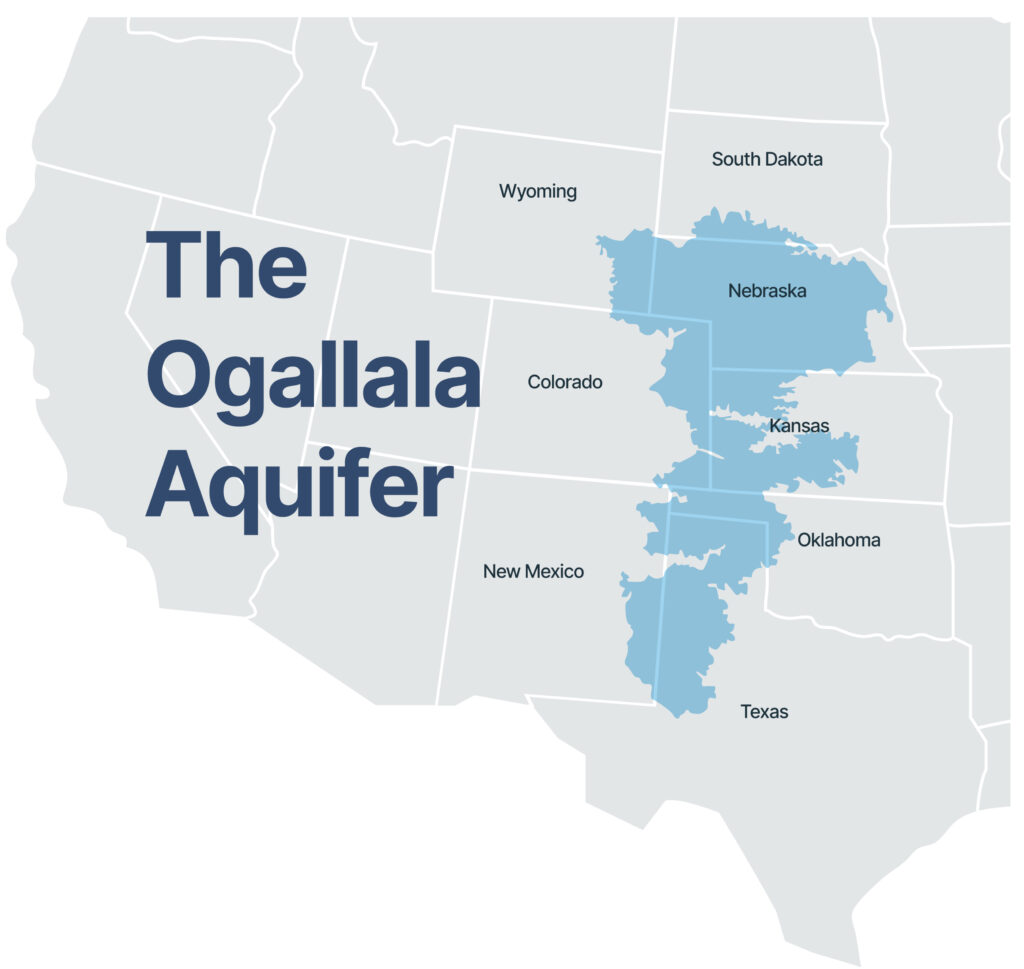
Population Growth Challenges Texas Water and Farms
Despite extreme heat and drought conditions combined with critical groundwater depletion, the population of Texas is growing exponentially. This growing population requires more resources including water, food and developed land for homes and businesses. In fact, TWDB projects that municipal demand will surpass irrigation demand by 2060 and that statewide water demand will increase by 9 percent by 2070.
Texas Population Boom
Eight of the nation’s top 15 fastest-growing cities were located in Texas between 2020 and 2023. Three Texas cities – Dallas, Houston and San Antonio – are currently among the top 10 most populous cities in America. And the Texas population of 30.5 million people is expected to nearly double by 2050.
Top 15 U.S. Cities
Eight of the nation’s top 15 fastest-growing cities were located in Texas between 2020 and 2023.
Texas in 2023
- Added the most people
- Added the most jobs
- Produced the most energy
- Exported more goods
Population Projection

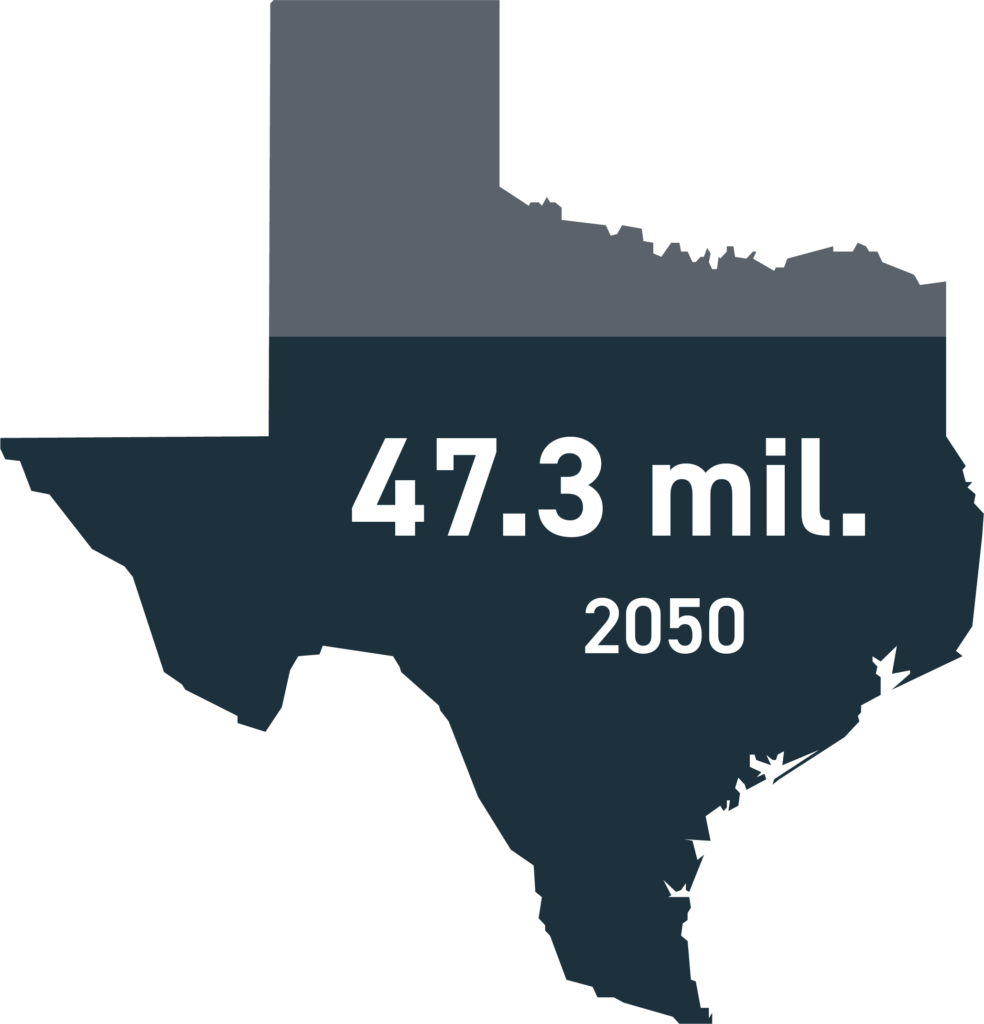
Texas Agriculture Boosts the Economy
The 141 million acres of Texas farms, ranches and forests provide employment for 14% of the state’s workforce and $150 billion to the state’s economy. And about 25% of the state’s agricultural land is considered “Nationally Significant”, meaning it is among the best in the nation for growing food and crops.
It’s no wonder that Texas farmers and ranchers rank #4 in the nation for the production of food despite weather pressures.
But the population growth of Texas has increased the demand and value for available land, which includes agricultural land (or working land). As a result, Texas lost 2.2 million agricultural acres between 1997 and 2017.

Population Growth Drives Land Conversion
As population growth continues, the threat of working land conversion over to non-agricultural uses increases. Land conversion is the process of changing the use of land, in this case farmland, to a non-agricultural use like housing or industry.
Too much agricultural land conversion to other uses can result in:





Due to land conversion in Texas, farmers and ranchers have another difficult challenge. They must raise more food with less water on less land.
Texas farmers and ranchers are responding to these challenges with the adoption of new practices and tools, including modern farm technology, that have the potential to help preserve water and improve crop growth.

Due to land conversion in Texas, farmers and ranchers have another difficult challenge. They must raise more food with less water on less land.
Texas farmers and ranchers are responding to these challenges with the adoption of new practices and tools, including modern farm technology, that have the potential to help preserve water and improve crop growth.
Featured Videos